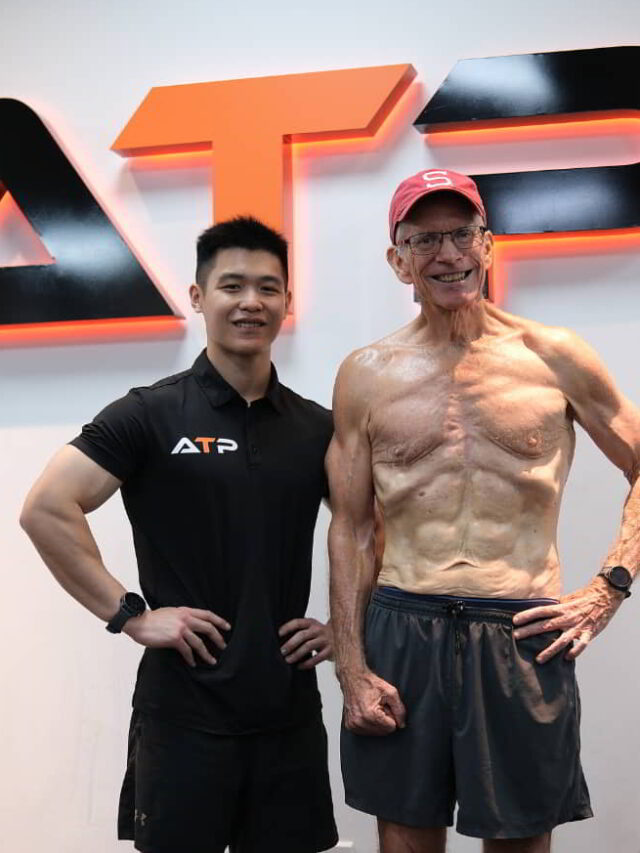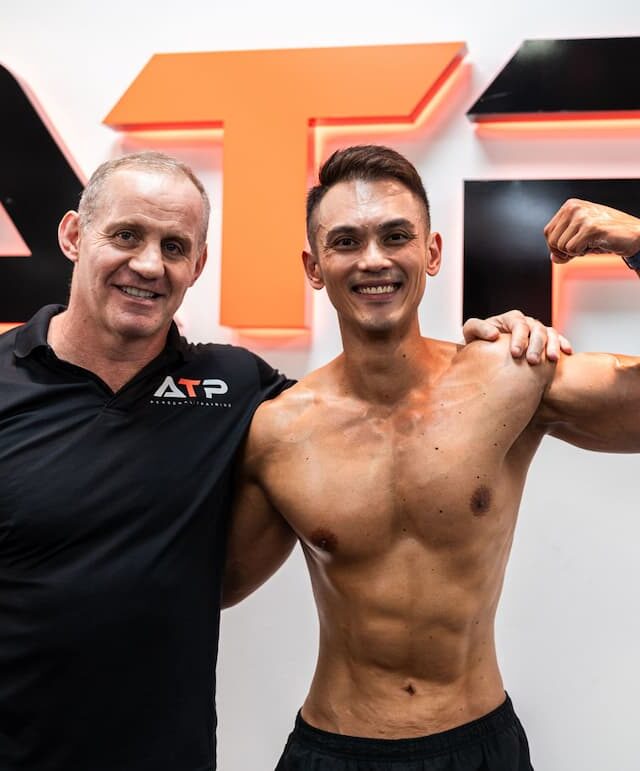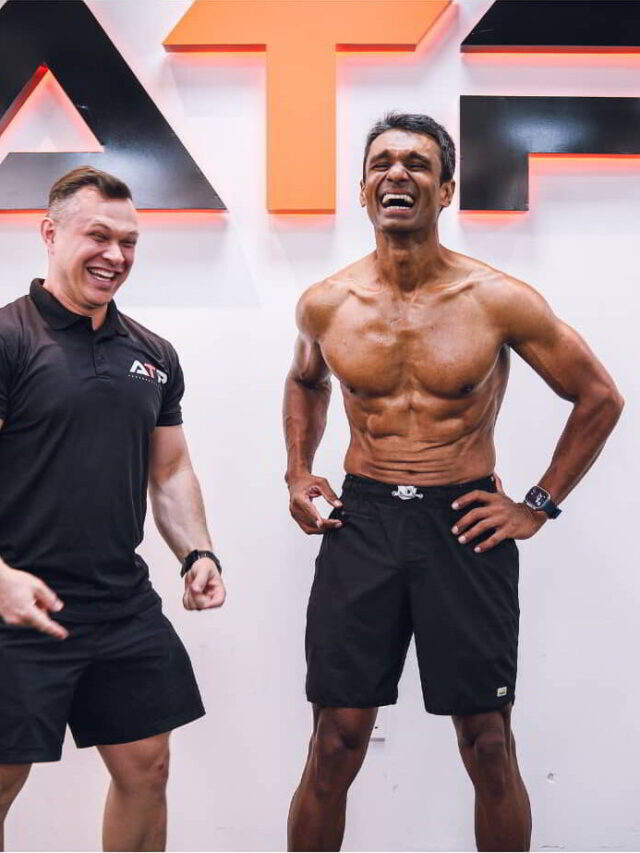Success Indicators
[25:00]
Pete: For example, in the UK we have service stations, and I suppose 7-Eleven is the Hong Kong/Singapore version. You know that your client’s going to be quite successful when they can go into 7-Eleven and pick out a meal from the food items available that fits within their dietary needs of the day. That’s the long-term definition of success—being able to forage in 7-Eleven and come out with a meal that is relatively high protein. It doesn’t have to be a perfect organic meal, but it has to be a 7 or 8 out of 10 meal that’s going to support your goals and isn’t going to derail your diet.
I think with clients, if you start people off on quite a strict, precise diet, by the end of the process, they’ve upskilled themselves to a point where they can go to a brunch, client drinks, or 7-Eleven and still be on their plan while doing it.
Core First Week Habits
[26:00]
Jay: I would definitely agree. I was thinking back to your point about what you’d recommend for the first week, and I was thinking about every time I’ve been on a phase, what are my cornerstone things that I put into play to get me going? It would be food prep, scheduling those sessions ahead of time so I know exactly when I want to be there, and honestly, getting a weighing scale just so that I’ve got a daily weighing and some sort of gamification around it.
Pete: Yeah, stepping on a scale is really useful. It drives momentum, it drives feedback, and then that rebuilds motivation. That’s a big component. People come in super motivated for about a week, and that needs to be replenished regularly.
Building Motivation Through Small Wins
[26:30]
Anytime that you create a series of tasks aligned with your goals and you actually complete them and tick them off, you’re replenishing your motivation. You’re getting these little dopamine drips through the day, and you’re associating dopamine with something that’s driving you in the right direction. So you’re stacking the odds in your favor. Every time you give yourself a task related to your ultimate goal that you then complete successfully, you’re voting and saying, “Okay, this is what I’m doing. This is the person I am now,” and you’re pushing yourself more to that side of the ledger.
The Problem with Gradual Behavior Change
[27:00]
There’s one mistake people make—you see people jumping in, you see it with lots of well-meaning coaches who have a desire to soft-coach people with “we’re going to change one habit a week for 43 weeks.” It’s this kind of well-meaning and slightly paternalistic approach to behavior change that’s based on some psychological studies with questionable results, and it’s really hard to get clients to be successful that way.
We’re always biased towards stuff that we’ve most recently done. So if they’ve just completed their behavior change nutrition course, they’ll think, “Wow, this makes so much sense to me,” but they fail to see that they’re already quite advanced and have a big knowledge base on fitness and nutrition. These behavior change tactics are going to work really well for them, but that’s not what they’re dealing with when working with a client who’s 45 years old with three kids and a busy life—they don’t have that base knowledge set. They actually need to build that from step one.
Understanding Trade-offs
[27:30]
Jay: I agree. And I think we also just need to be careful of recency biases in terms of negative impacts because if we’ve just done our own photo shoot, we might be like, “Oh man, I’ve got an eating disorder for a few weeks. I can’t project that onto my clients.” But being in a deficit when you’re at 20-25% or 30% body fat is the most pro-health activity you could possibly do, whereas being in a deficit from 12% or 10% down to 5% actually starts to become detrimental for your health over time. So it’s completely different worlds that we’re working in.
Avoiding Projection
[28:15]
It’s funny, we’re all guilty of applying our own circumstances and narrowing down other people’s worlds based on our own worldview and abilities. I think I’ve safely been in the middle-aged coach/trainer group for a while now. As a young coach, you’re always worried that you’re not showing empathy with your clients and their circumstances.
Now that I do a bit more coaching with younger athletes—12, 13, 14-year-olds—more in a sports context, I have to be super aware that I’m not projecting my own limitations onto them. As an older coach with limited athletic ability and recovery ability, I need to make sure I’m not restricting those younger clients from performing and reaching their potential by throttling down the loading that they can experience and recover from.
So there’s always that bias where you just think, “Okay, the thing I’ve most recently done is the most relevant thing because that’s what I’m thinking about,” or “My most recent experience is universal, and everyone’s experience will be the same.”
The Value of Experience
[29:30]
I think that’s why having me, you, and Jeremy at the core of what we put out—our average age, our time in the industry, and the average age of clients we coach (we’ve all got families and kids)—we’ve got a good base of real-life experience to work from that makes our product a very good fit for the type of clients we work with. Because at this stage in our lives, we very much are the type of clients we work with. So there’s much more of a natural understanding rather than an imagined projection of what people can do.
Pete: I think it’s understanding that—and I think this comes with age, having been doing this for a while now—you understand that everything’s a trade-off. I think the industry as a whole is largely driven or populated by 20-something personal trainers, and that’s great because a big driver of success on the gym floor is energy, client engagement, and being fun to be around for an hour.
Real-Life Trade-offs
[30:15]
However, the trade-offs are much smaller for them. For most of those personal trainers, going to the gym is one of their biggest hobbies—probably the biggest thing in their life. And that’s simply not true of most of our client base. It’s going to be quite low down on their list of priorities.
So if we can get them just to prioritize it—if it gets into the top five priorities, fantastic. But they don’t have unlimited time and energy to spend focusing on this particular goal. It needs to integrate well into what they’re already doing.
So the trade-off is, “If I do an extra cardio session, am I spending less time with my kids? If I do this, am I missing a meeting at work? If I do this, am I not getting what I need done?” For most of our clients, those are very real trade-offs that they encounter on a weekly basis. So we want to make sure that our proposition to them is realistic and achievable but still drives success and results.
Nutrition and Output
[31:00]
Even in terms of nutrition: fueling clients is always going to be based on what their output is, what their activity contribution is to creating a deficit. The more training you do, the more food you can eat—it’s quite simple. So if people really enjoy their food, they often find time to drive more activity. If people are tight on their exercise budget, they’re not going to be able to eat as much food. It’s pretty simple.
If you’re sat down in an office for 10 hours a day and the only respite from that is three times a week to come and train with us, your diet’s going to have to be more focused. You’re going to have to be tighter in terms of measuring things as well.
Conclusion
[31:45]
Pete: I think that really rounds off this discussion. For better or for worse, we’ve all started to narrow in and even surpass a lot of the ages that our clients are. We’ve been doing this for a long time. We know what works for us when we were 20, we know what works for us when we’re 30. You and Jeremy know what works for you in your 40s and beyond, in Jeremy’s case.
To summarize where we started off in this conversation: I wouldn’t worry about recovery, because everyone that’s ever come in to us at ATP has done a transformation—we’ve survived 100% of the time! We know that everything has a cost. Just focus on training and your aerobic work first and all of your lifestyle behaviors outside of that. You will improve dramatically over time.









